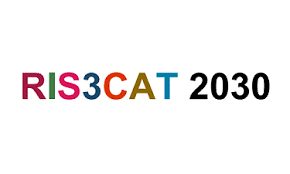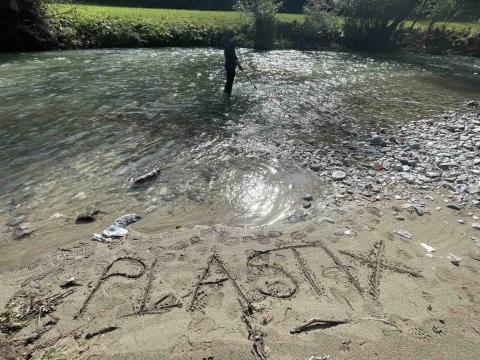Policy instruments
Discover the policy instruments that the partners of this project are tackling.
A means for public intervention. It refers to any policy, strategy, or law developed by public authorities and applied on the ground to improve a specific territorial situation. In most cases, financial resources are associated with a policy instrument. However, an instrument can also sometimes refer to a legislative framework with no specific funding. In the context of Interreg Europe, operational programmes for Investment for Growth and Jobs as well as Cooperation Programmes from European Territorial Cooperation are policy instruments. Beyond EU cohesion policy, local, regional, or national public authorities also develop their own policy instruments.
The policy responsible authority of the Pirkanmaa Regional Development Programme 2022–2025 is the Council of Tampere Region (Pirkanmaa is Finnish for Tampere region), one of the PLASTIX partners. The Programme is based on five missions:
- Tampere region creates value from expertise and knowledge
- Tampere region businesses experience renewal and grow responsibly
- In Tampere region, no one is excluded
- Tampere region is a place of sustainable living and mobility
- Tampere region gains strength through internationality
The Programme also includes the smart specialisation strategy of Tampere region with the following focus areas:
- Responsibly renewing industries and managed sustainability breakthrough
- Smart and sustainable communities
- Wellness technologies and services
- Culture and the digital experience sector
The Finnish ERDF funding is channelled by the Ministry of Economic Affairs and Employment to regional authorities like the Council of Tampere Region. In the current programming period, there are six priority axes in the Innovation and skills in Finland 2021–2027 programme. The second priority axis is dedicated to carbon neutrality, which is the one closest to the PLASTIX aims and activities.
Partners working on this policy instrument

RIS3CAT 2030 is Catalonia's strategic response to the European Commission's request for regions to develop research and innovation strategies for smart specialization (RIS3). These strategies aim to address local challenges and are eligible for co-financing through European funds.
Key elements of RIS3CAT 2030 include:
- Global challenges addressed: Catalonia's strategy takes into account major global issues, such as climate change, pollution, resource waste, unemployment, social inequalities, an aging population, and the COVID-19 pandemic.
- Goals: The strategy seeks to create a greener, digital, resilient, and fair socio-economic model with the support of European funds, emphasizing transformative, responsible research and innovation.
- Key focus areas: Priorities include the development of enabling technologies, the creation of a digital and technology-driven industry, and the transformation of goods and services. Social innovation plays a crucial role in this process.
The PLASTIX initiative is directly linked to RIS3CAT 2030, focusing on the chemical industry and RDI centres to improve solutions for plastic recycling and reuse. This aligns with RIS3CAT's goal of developing technologies for a resource-neutral and environmentally responsible system.

Partners working on this policy instrument
The ERDF North Netherlands (NNL) programme is all about innovation for small and medium-sized enterprises (SMEs) in the region. It is based on the Regional Innovation Strategy for Smart Specialisation (RIS3), which aims to create an open, creative environment that helps build a future-proof economy and job market in NNL – with a focus on Broad Prosperity.
At the heart of our approach are four key transitions that align with our regional strengths. One of the most exciting of these is the shift from a linear to a circular economy. The RIS3 focuses on identifying and capitalising on new opportunities within these transitions, contributing to a more circular, happy, and inclusive NNL.
One major opportunity we see is the development of circular plastics as a smart specialisation. With the PLASTIX project, we aim to better understand the innovation ecosystem around circular plastics in our region. We are also keen to exchange ideas with other regions to expand and sustain this ecosystem. Ultimately, this collaboration will lead to new smart specialisations in circular plastics – and that is the goal of our ERDF programme.
Partners working on this policy instrument

The Savinja-Šalek Region Territorial Development Program 2021-2027 has been adopted by all 10 of Savinja-Šalek region's municipalities in order to drive sustainable regional growth. The program integrates local, regional, national, and EU initiatives to address key issues.
Strategic goals:
- Reduce waste: encourage recycling and minimize waste generation.
- Boost energy efficiency: improve energy use across industries.
- Lower energy consumption: support cleaner and more efficient energy practices.
- Enhance environmental quality: prioritize conservation and remediation projects.
Transforming the region:
- Transitioning to a green economy and creating green jobs.
- Utilizing innovative approaches and advanced waste management to achieve sustainability.
Project contributions to regional objectives:
- Environmental preservation (Objective 8): initiatives to protect and enhance local water bodies.
- Waste reduction (Objective 9): targeted actions for less waste and a cleaner environment.
Vision 2030:
A low-carbon, green and connected SAŠA region, driven by innovative research and impactful projects.

Partners working on this policy instrument

The policy instrument, managed by the Swedish Agency for Economic and Regional Growth (Tillväxtverket), focuses on the following specific policy objectives::
- Promoting transition to a circular and resource efficient economy
- Enhancing sustainable growth and competitiveness and job creation in SMEs, including by productive investments
- Developing and enhancing R&I capacities and the uptake of advanced technologies
- Reaping the benefits of digitisation for citizens, companies, research organisations and public authorities
The policy instrument will contribute towards:
- A greener region, through circular economy and bio economy
- A more competitive, resilient and diversified business sector in North Middle Sweden
- More sustainable – from a climate and environmental perspective – economic activities in North Middle Sweden
Partners working on this policy instrument

In line with the EU Industrial Strategy, Lombardy Region intends to support the strengthening, resilience and competitiveness of the production chains and of the industrial, productive and economic ecosystems of its territory, by developing strong links among companies and involving research, training and financial institutions.
The policy instrument, managed by the General Directorate for Economic Development of Lombardy Region, consists of two phases:
• Phase 1: Expression of Interest (2022-2023)
Partnerships submit a concept note on their future activities. If evaluated positively, a quality label is granted to these consortia, awarding some extra-points when submitting a project proposal under Phase 2.
• Phase 2: Activation of specific measures to support interventions (from 2022 onwards)
According to the emerged challenges and needs, Lombardy Region intends to activate several support measures for the development and consolidation of local economy. The Phase 2 is ongoing. A first call for proposals was launched in mid-2022, followed by others in early 2023.
Among the priorities addressed there are sustainability and circularity, industrial innovation and technology transfer, digitalization, educational and training activities, internationalisation. These topics should be then declined in specific activities, dealing for example with eco-design, waste management or industrial symbiosis, that strongly fit the current challenges and activities related to plastic sector.
Partners working on this policy instrument

